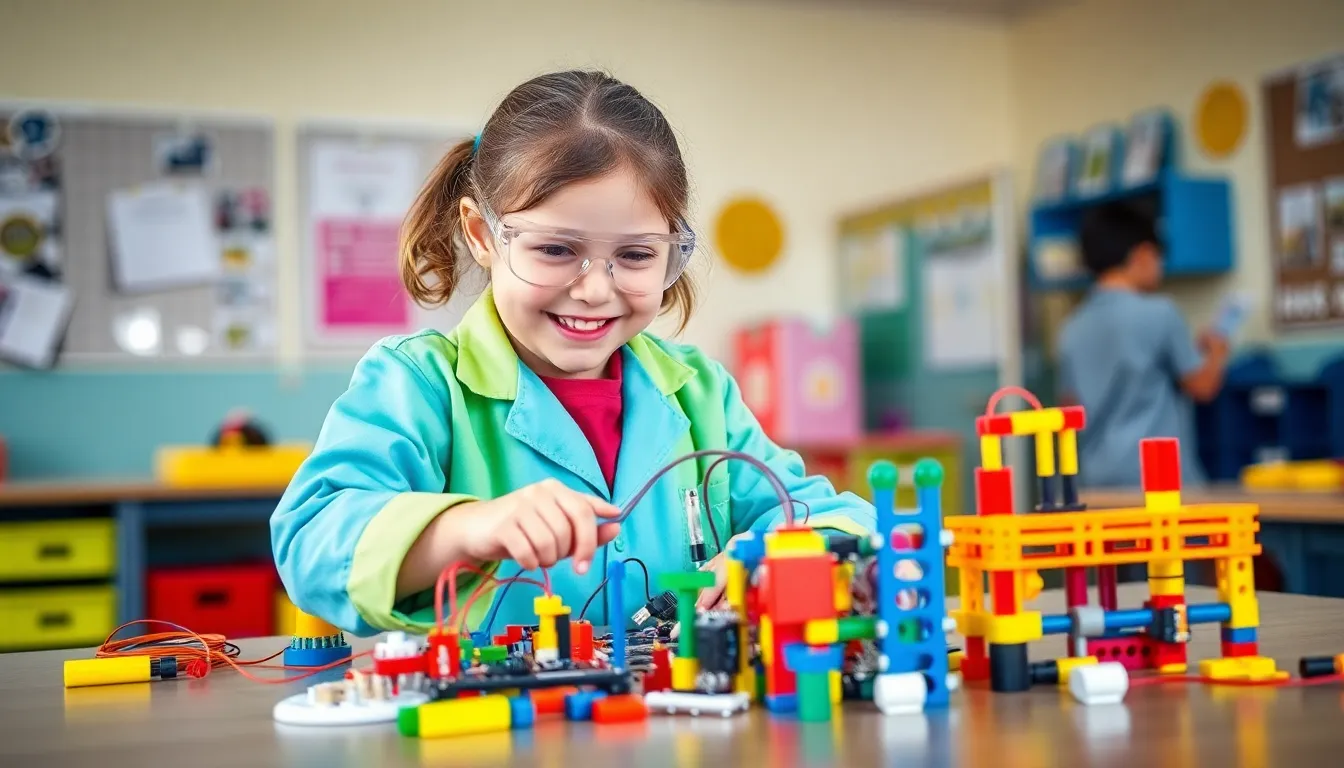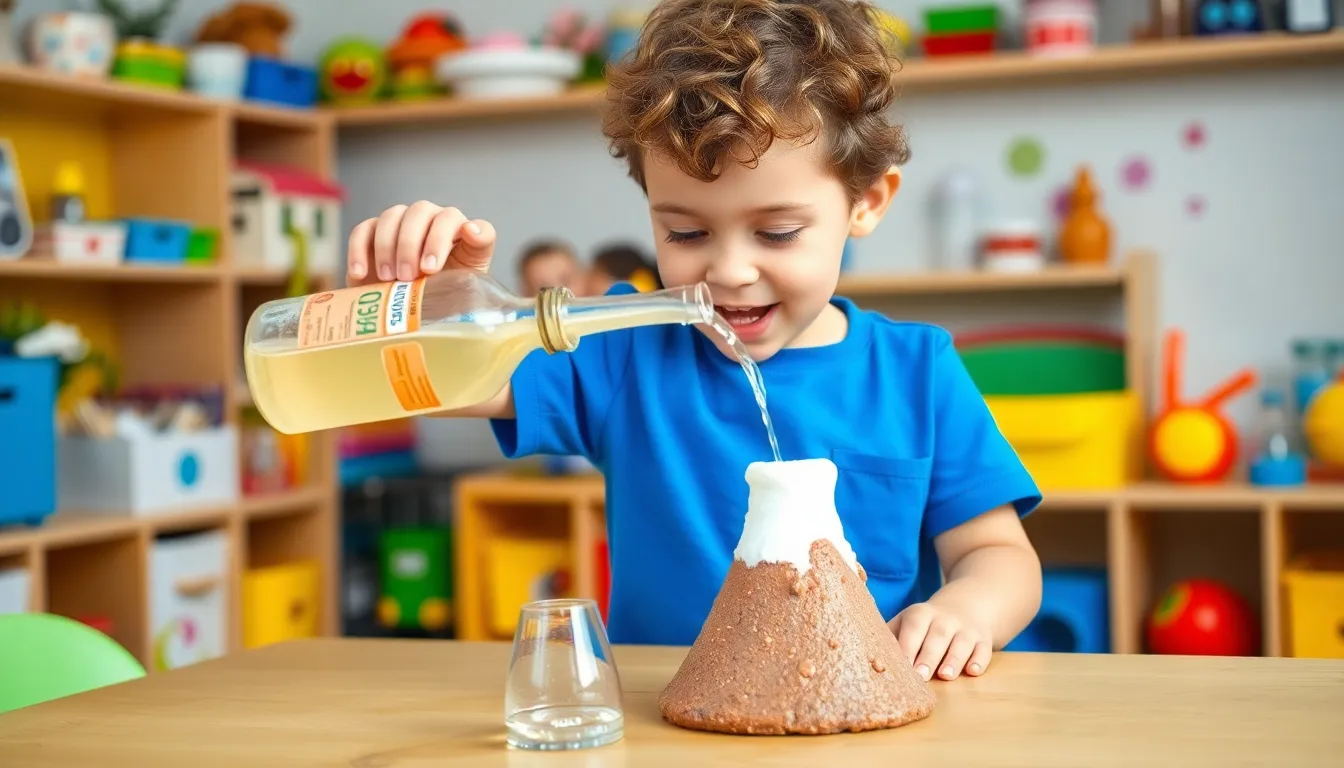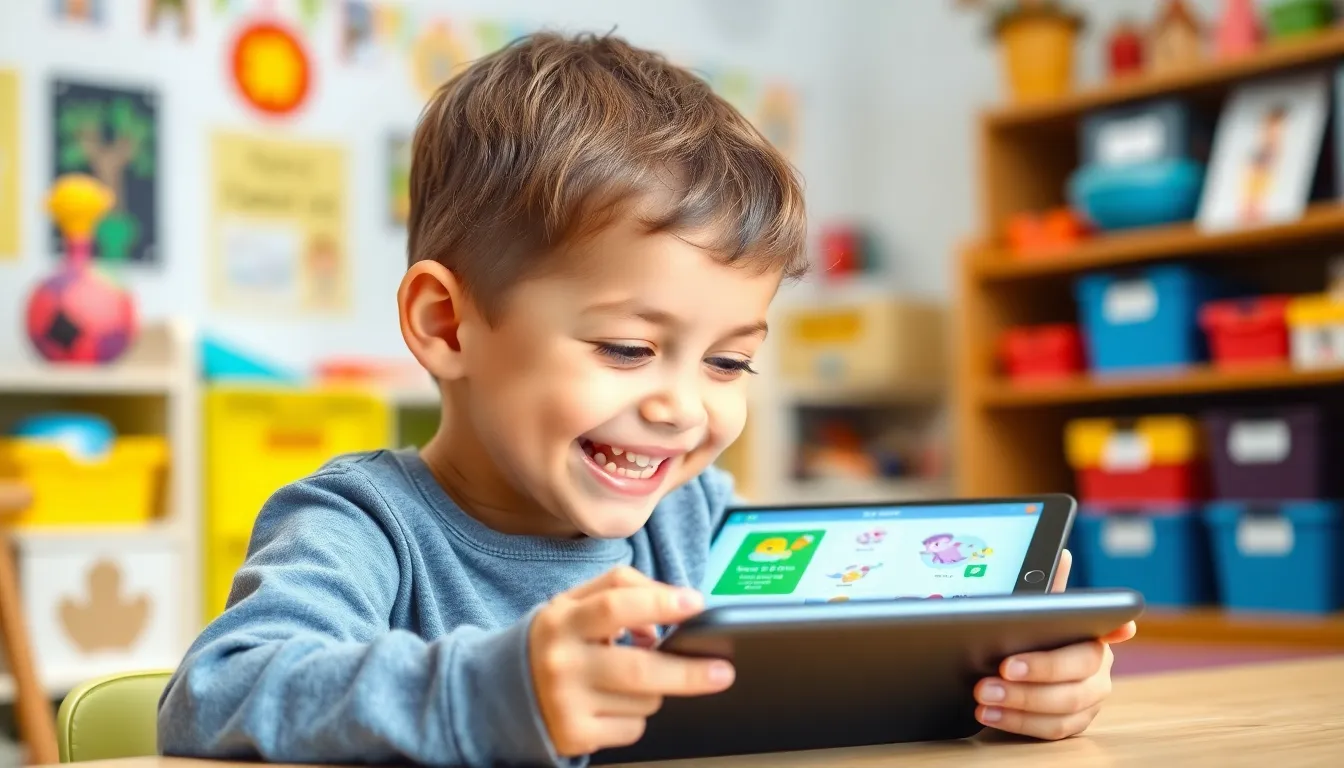In a world where kids are glued to screens, science education toys are the secret sauce that can ignite curiosity and spark a love for learning. These toys aren’t just about fun; they’re the ultimate brain boosters, transforming young minds into mini Einsteins. Imagine your child building a volcano that erupts with baking soda and vinegar—who knew science could be this explosive?
Table of Contents
ToggleOverview of Science Education Toys
Science education toys play a pivotal role in shaping children’s understanding of core scientific principles. These toys stimulate curiosity and foster exploration, encouraging children to ask questions and find answers. Many options exist, ranging from simple chemistry sets to intricate robotics kits. Each option serves to nurture critical thinking skills while providing hands-on experiences.
Experiments form a significant part of these educational toys. Children can mix substances, build structures, or engage with electronic components. Each activity enhances their problem-solving abilities and promotes a deeper appreciation for the scientific process. Toys designed for different age groups ensure that as children grow, they continue to challenge themselves and expand their knowledge.
Diverse materials often create these toys, including plastic, metal, and wood. Each material presents unique learning opportunities, from conducting electricity to understanding basic physics. Visual and tactile elements captivate young learners’ attention, enhancing the overall educational experience.
Furthermore, science education toys foster collaborative skills. Many toys encourage group projects, allowing children to work together. Such teamwork builds communication skills and teaches the value of diverse perspectives in problem-solving.
Parents and educators recognize the importance of integrating play with education. They can find a variety of science education toys at toy stores or online. Online marketplaces showcase extensive selections, making it easy to explore options tailored to specific interests.
Ultimately, science education toys serve as critical tools for developing a child’s love for learning and discovery. They bridge the gap between theoretical knowledge and practical application, preparing children for future scientific explorations.
Benefits of Science Education Toys

Science education toys offer numerous advantages that contribute to a child’s development. Engaging with these toys fosters essential skills and encourages ongoing learning.
Enhancing STEM Skills
Science education toys significantly enhance STEM skills. Interactive kits like robotics sets and circuit boards introduce concepts in science, technology, engineering, and mathematics. Kids learn to apply logic and reasoning while enjoying hands-on experiences. Building structures or conducting experiments hones engineering and problem-solving abilities. They also strengthen mathematical skills through measurements, patterns, and predictions. Toy makers design various sets suitable for different age groups, ensuring a tailored learning experience. Depth of understanding increases as children experiment, observe results, and refine their methods.
Promoting Curiosity and Exploration
Curiosity and exploration thrive in children exposed to science education toys. Toys spark imagination and inspire questions, leading to a desire for discovery. Engaging with materials like chemistry sets encourages experimentation and observation. Kids learn the value of trial and error by mixing substances or building models. Many toys feature themes or concepts that promote diverse scientific exploration. Encouragement from parents and educators further nurtures this natural curiosity. Collaborative projects also enhance teamwork skills, allowing children to exchange ideas and solutions. Overall, these toys support lifelong learning and an inquisitive mindset.
Types of Science Education Toys
Science education toys encompass a variety of exciting and interactive options. These products engage children and cultivate a deeper understanding of scientific concepts.
Experiment Kits
Experiment kits allow children to dive into the world of science through hands-on activities. These kits often include materials for conducting experiments in chemistry, physics, and biology, giving kids the chance to explore complex ideas simply. For example, those focused on chemistry might feature safe reactions like creating slime or growing crystals. Learning through these kits fosters investigative skills and encourages children to hypothesize and draw conclusions based on their findings. Engaging with these kits not only makes science fun but also nurtures a child’s analytical thinking abilities.
Robotics and Coding Toys
Robotics and coding toys introduce children to fundamental concepts in engineering and computer science. These toys allow kids to build and program their robots, which enhances logical reasoning and sequencing skills. Some popular options include programmable bots that follow instructions and interactive games that teach coding principles. By working on these projects, children learn to troubleshoot and problem-solve, vital skills for future STEM-related fields. Robotics activities often include collaborative elements, encouraging teamwork and communication as children share ideas and work together on their creations.
Nature and Ecology Toys
Nature and ecology toys inspire kids to appreciate the environment and learn about biodiversity. These toys often include components for gardening, wildlife exploration, or ecosystem simulation. For instance, some kits allow children to cultivate plants or create habitats for insects, fostering a love for the natural world. Exploring nature through play enhances observational skills and stimulates curiosity about living organisms and ecosystems. Engaging with these toys teaches children about sustainability, conservation, and the interconnectedness of life, laying the groundwork for responsible environmental stewardship.
Choosing the Right Science Education Toy
Selecting the right science education toy is crucial for maximizing engagement and learning. Factors such as age appropriateness and safety considerations play vital roles in this decision-making process.
Age Appropriateness
Age-appropriate toys align with a child’s developmental stage and cognitive abilities. Toys designed for younger children often focus on fundamental concepts, while those for older kids can incorporate complex theories. Parents should consider age recommendations on packaging to ensure the toy suits their child’s skill level. For example, science kits aimed at preschoolers might involve simple experiments, while those for teens may encompass advanced robotics or chemistry challenges. Matching toys to age groups enhances comprehension and sparks interest in scientific exploration.
Safety Considerations
Safety is paramount when choosing science education toys. Parents must examine materials for any harmful substances, such as BPA or toxic chemicals. Toys should meet safety standards set by organizations like the Consumer Product Safety Commission (CPSC). Small parts can pose choking hazards, making it essential to review age guidelines. Opting for toys with rounded edges and non-toxic materials adds an extra layer of protection. Furthermore, adult supervision during experiments encourages safe handling and fosters a sense of responsibility among children. Prioritizing safety ensures enjoyable and secure learning experiences.
Science education toys are invaluable tools that ignite curiosity and foster a lifelong passion for learning. They provide hands-on experiences that not only make scientific concepts accessible but also encourage critical thinking and problem-solving skills. With a wide range of options available, these toys cater to various interests and age groups, ensuring every child can find something that resonates with them.
By integrating play with education, science education toys help children develop essential STEM skills while promoting teamwork and collaboration. As parents and educators embrace these innovative learning tools, they’re not just preparing kids for academic success but also inspiring the next generation of thinkers and creators. Investing in science education toys is a step toward nurturing inquisitive minds ready to explore the wonders of the world.








